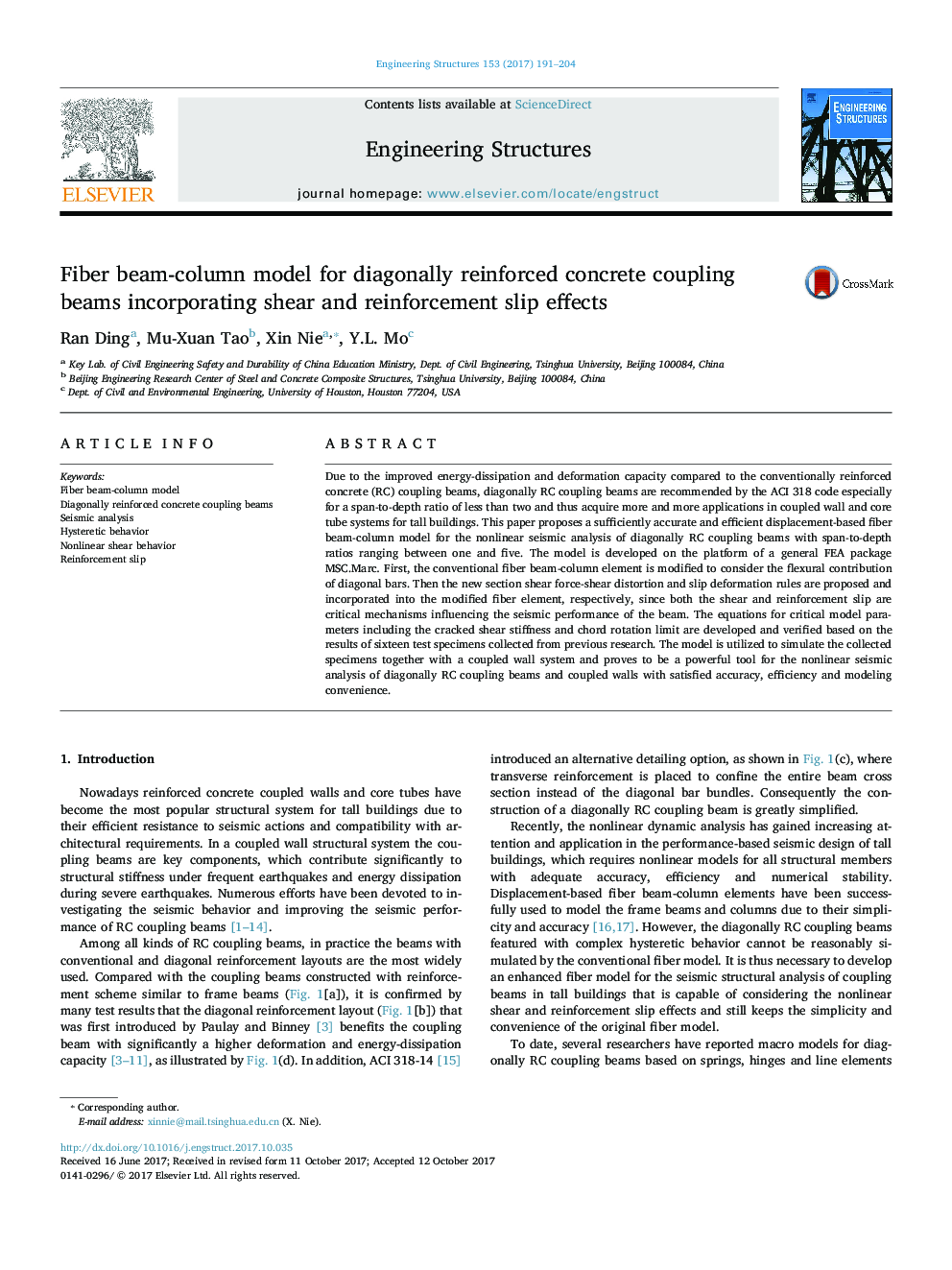| Article ID | Journal | Published Year | Pages | File Type |
|---|---|---|---|---|
| 6739204 | Engineering Structures | 2017 | 14 Pages |
Abstract
Due to the improved energy-dissipation and deformation capacity compared to the conventionally reinforced concrete (RC) coupling beams, diagonally RC coupling beams are recommended by the ACI 318 code especially for a span-to-depth ratio of less than two and thus acquire more and more applications in coupled wall and core tube systems for tall buildings. This paper proposes a sufficiently accurate and efficient displacement-based fiber beam-column model for the nonlinear seismic analysis of diagonally RC coupling beams with span-to-depth ratios ranging between one and five. The model is developed on the platform of a general FEA package MSC.Marc. First, the conventional fiber beam-column element is modified to consider the flexural contribution of diagonal bars. Then the new section shear force-shear distortion and slip deformation rules are proposed and incorporated into the modified fiber element, respectively, since both the shear and reinforcement slip are critical mechanisms influencing the seismic performance of the beam. The equations for critical model parameters including the cracked shear stiffness and chord rotation limit are developed and verified based on the results of sixteen test specimens collected from previous research. The model is utilized to simulate the collected specimens together with a coupled wall system and proves to be a powerful tool for the nonlinear seismic analysis of diagonally RC coupling beams and coupled walls with satisfied accuracy, efficiency and modeling convenience.
Keywords
Related Topics
Physical Sciences and Engineering
Earth and Planetary Sciences
Geotechnical Engineering and Engineering Geology
Authors
Ran Ding, Mu-Xuan Tao, Xin Nie, Y.L. Mo,
